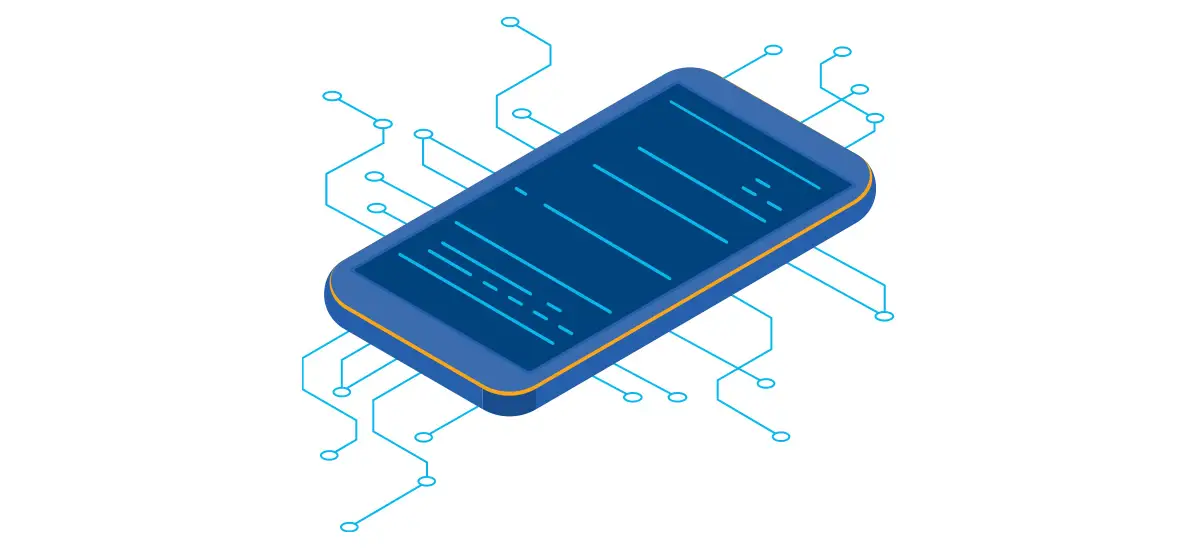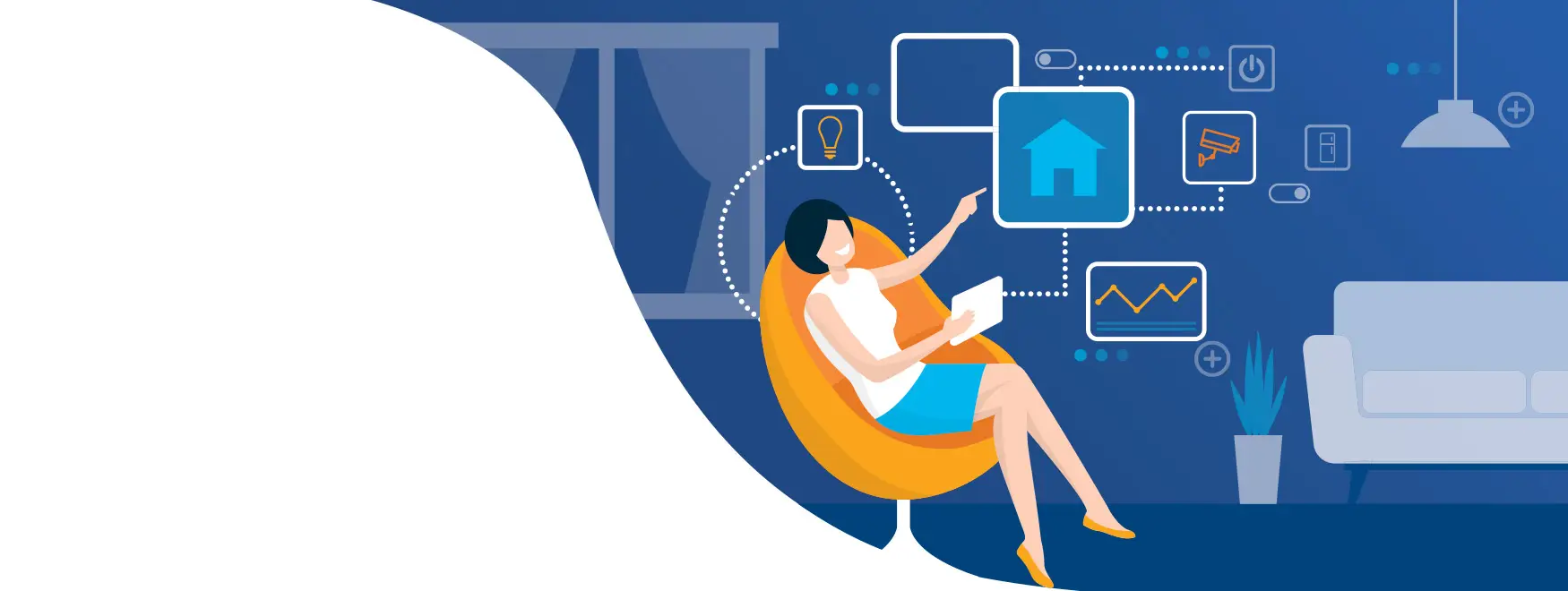Feature: The Future of Homeownership
It can be a sprawling 8,500-square-foot mansion, where guests must leave breadcrumbs to get back to the main foyer. It can also be a 500-square-foot studio, where the plumbing is so eccentric guests are asked not to flush the toilet while the dishwasher is running. From Tudors to bungalows, from raised bedrooms to multistory penthouses, it’s a common thread that connects us. It’s the bedrock of your life, often your family, and definitely a community. It’s home.
So, it would behoove us—and yes, we are celebrating working “behoove” into a sentence—to take a solid look into the future of homeownership. And we really need to come up with our own term for this phenomenon since you don’t need to own a home to make it yours. How about “homehavership?” Yes. Yes. Much more inclusive.
Now, back to the future. Having a home is evolving, which should come as a surprise to no one, based on our ever-changing world.
Tech is changing the way you live.
Here are a few pieces of technology making living at home all the more homier.
Smart speakers? Please. That’s so 2019. The best way to build your home tech arsenal with the future in mind is to deploy smart displays. They have all the functionality of a smart speaker but with the added feature of a full-color display screen. This results in more spontaneous video calling and having your digital assistant look up more visual content. Asking for a recipe and using the screen to make something fresh for dinner is a great example of increased utility.
The only reasons to go with a smart speaker versus a smart display are budget and appearance. Some don’t see the tech return on investment of displays, opting for the more budget-friendly speaker. And many enjoy how a smart speaker will blend into the décor of their home and see a smart display as a glaring eyesore. It’s just a matter of design preference.
Smart plugs can turn nearly anything that requires electricity into a smart device. Just plug them into a wall outlet and set them up via any Android or iOS device. This may be a quantum leap option for the chronically forgetful. Imagine “remembering” to turn off the basement lights or to brew a fresh morning cup of coffee without leaving the delicious cocoon that is your bed. These devices are small and even unassuming, but they can make a big difference.
The future will be very bright, and very connected. Not only will technology be all around us, but also your devices will be talking to each other without you having to lift (or swipe) a finger.
Putting this through the tween filter, you can also hook these devices up to TVs and game consoles. Your kiddo not coming down for dinner? No problem. Turn the gaming system off remotely during a rousing online game with his friends, and you will end up with a very attentive yet very perturbed kiddo. Yes, this will make you feel a touch omnipotent, so use judiciously.
Wireless doorbell cameras are a great on-ramp into smart home devices. They send push notifications to your smartphone when movement is detected, can record any activity day or night, and let you talk to anyone at your door through your smartphone from wherever you are.

Tech talking to tech is changing.
It’s called the Internet of Things, and for years folks have been waiting for it to hit the critical mass needed to change our daily lives. The easiest way to explain it is this—all the connected devices in your life will start talking to each other without your involvement. It’s as exciting as it is potentially harrowing.
And while the Internet of Things is still evolving, it can bring many energy efficiencies to your home. Here’s how: These devices are being created to (smartly) shift into low-power mode when not in use. Additionally, when your life is more efficient, your energy usage is as well. For example, if the Internet of Things enables you to make fewer trips to the grocery and other big-box retail stores, less energy is consumed, and we reap the efficiencies of a simpler life.
Environmental home building is changing.
Your home can have the biggest impact on your carbon footprint, mostly because of its longevity. The lifespan of a house is 50 to 200 years. Make a good decision at the outset, and you—and the planet—reap the benefits for decades. There are several trends in building a home that play nicely with the Earth.
Passive Houses
This may be the worst name for a thing since “slacks.” Passive houses aren’t passive at all. They are, in fact, a very active, if not aggressive, approach to home building. What makes a passive house a passive house? These homes use rigorous energy efficiency and comfort standards, including extreme airtightness, continuous insulation, and high-performance windows and doors. Owners find the reduction in their carbon footprint an added feel-good bonus to all the additional benefits.
Prefab Houses
Prefabricated homes are environmentally friendly for one very important reason—waste. There are three types of prefab homes—manufactured, modular and mobile. All can be luxurious and sophisticated, and all can be built while reducing unused materials. Our country creates over 600 million tons of construction and demolition debris annually. Prefab homes work to eliminate this level of waste and, for that reason, have become an attractive option for those wanting to reduce their environmental footprint.
ENERGY STAR® Certified Homes
For those who see a new home built to code as just a starting point, the ENERGY STAR certified home just might be the perfect option. On average, these homes are 20% more energy efficient. And lower energy costs are just the beginning. The trusted ENERGY STAR label offers greater home comfort, less maintenance, and a higher asking price when you put your home on the market. Check out our list of local builders.
Zero Energy Ready Homes
Many buyers are asking their new home builders to pursue this future-focused form of home construction. A Zero Energy Ready House is so energy efficient that once a renewable energy source is added, the home could meet its own annual consumption needs. The idea is to create a home with the highest level of performance, offering unprecedented levels of energy savings, comfort, health and durability.

Where we call home is changing.
It’s called the Suburban Resurgence, and while it may be driven by pandemic fatigue, it looks like a trend that’s here to stay. Boosted by those wonderfully quirky, unpredictable millennials, people are moving in droves to the car-dependent, big-box-retail, more-space-for-your-dollar suburbs, and even rural locations. Remote work allows folks to live just about anywhere, and the new destination of choice has seen a dramatic rise in demand.

Millennials are changing the value of homeownership.
The American dream of owning your home is being questioned by millennials. This group has the lowest ownership percentage in generations. And, surprisingly, this trend of not making homeownership a priority isn’t exclusive to their generation. According to the latest census survey, each group—from the silent generation (78.8%) to the baby boomers (77.8%) to Gen-X (69%) to millennials (47.9%)—has experienced a decrease in homeownership demand.
Why? Some point to the millennial generation seeing a home as too difficult. They have student debt, get married later in life, and the lending standards have tightened up since the housing crisis. Others see the driver being more emotional. They have lived without stability, so the stability that owning a home provides doesn’t appeal to them.
The line between the indoors and the outdoors is changing.
A recent survey from Forbes revealed that 85% of home building experts had seen a spike in outdoor living space additions and upgrades. These days, people want to cook outside, relax outside and recharge outside. The two outdoor spaces that have enjoyed the biggest spike in usage in recent months? The porch and the patio. Both offer accessibility and flexibility, with the option of easily covering—with an awning or umbrella—during inclement weather.
How we exercise is changing.
Just because fewer people are going to the gym doesn’t mean dad bods and muffin tops are making a comeback. Recently, “going to the gym” means staying at home. Purchases of home workout equipment continue to rise, and downloads of fitness apps continue to increase.
Where our children learn is changing.
After tackling the home’s transformation into a home school and a home office, some actually like the change. More employers are open to having their employees work remotely full time. Many Marylanders have evolved their homes into multiuse hubs permanently. It takes meticulous management of your time and your space. But when done well, it can redefine your home, your work and your life.
To sum it all up, it seems that the one constant in homehavership is change. The old rules are getting tossed out, and they’re being replaced by a wonderful tidal wave of fresh thinking. If you’re looking for a perfect time to redefine your home, you’ve found it. And with every step, you can find ways to save energy and money.
Illustrations: GettyImages
